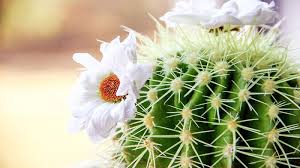How to Expand Your Blue Willow China Collection

Blue Willow China, with its distinctive blue-and-white design featuring picturesque scenes of pagodas, bridges, willow trees, and birds, has remained a timeless favorite among collectors for centuries. The elegant patterns, combined with the rich history and cultural significance, make this type of porcelain an essential and highly sought-after collection piece. Whether you’re a seasoned collector or just beginning to explore the world of Blue Willow China, expanding your collection can be both an exciting and rewarding endeavor.
In this article, we will discuss various strategies and tips for growing your Blue Willow China collection. From understanding the different types and styles to navigating the marketplace, these insights will help you make informed decisions and build a collection that reflects both your personal taste and the historical value of these exquisite pieces.
1. Understand the History and Evolution of Blue Willow China
Before diving into the world of collecting, it is essential to have a solid understanding of the history and evolution of Blue Willow China. The design is believed to have originated in China during the 18th century, with its most famous pattern created by the British manufacturer Thomas Minton in the early 1800s. The pattern quickly gained popularity in Europe and North America, eventually becoming a symbol of elegance and refinement.
Understanding the various versions of Blue Willow, including the original Chinese versions and the subsequent Western adaptations, will give you an appreciation for the different styles, manufacturers, and production techniques involved in making these pieces. It will also help you identify the most valuable and historically significant items when you’re adding to your collection.
You should also familiarize yourself with the myth and symbolism behind the design, which often involves a love story of forbidden romance, as it adds an extra layer of meaning to your collection. This historical context will not only make your collection more meaningful but also deepen your connection to the pieces you acquire.
2. Set a Focus for Your Collection
One of the first steps in expanding your Blue Willow China collection is deciding what type of pieces you want to focus on. Blue Willow China is vast, and there are various categories of items you can collect. Some collectors may focus on dinnerware sets, while others may prefer individual pieces like plates, cups, or teapots. You may also choose to collect a specific type of Blue Willow, such as:
- Antique Blue Willow: Many collectors are drawn to antique pieces of Blue Willow China, as they tend to be rarer and often hold higher value. These items may include early Chinese versions or English-made Blue Willow from the 18th or 19th centuries.
- Manufacturer-Specific Collections: Certain manufacturers, such as Spode, Wedgwood, and Minton, produced their own versions of Blue Willow. Focusing on acquiring items from a particular manufacturer can help narrow your collection while still allowing for variety in terms of size, shape, and design.
- Functional or Decorative Items: While Blue Willow dinnerware and serving pieces are the most popular types of collectible items, you may also want to explore decorative items like vases, bowls, or trays. These often feature larger, more intricate designs that can be visually striking when displayed.
- Rare Variants or Limited Editions: Some collectors are drawn to special or limited-edition Blue Willow pieces that were produced in smaller quantities. These may include variations of the traditional design or commemorative items produced for specific events.
By focusing on a particular aspect of Blue Willow, you can begin to refine your collection and ensure that it is cohesive and meaningful.
3. Research and Identify Valuable Pieces
Once you have a clear idea of the direction in which you want to take your collection, it’s important to research and identify valuable Blue Willow pieces. Not all Blue Willow China is created equal, and the value of an item can depend on several factors, including its age, condition, rarity, and manufacturer. Here are some key aspects to look for:
- Age: Antique Blue Willow China, particularly those produced in the 18th and 19th centuries, tends to be more valuable. Older pieces are often marked with a maker’s mark, which can help identify the production date.
- Condition: Condition is one of the most important factors in determining the value of a Blue Willow piece. Items with minimal wear, no cracks or chips, and original paint are the most valuable. Always inspect each piece carefully before purchasing.
- Maker’s Marks: Different manufacturers of Blue Willow China often used distinct marks or stamps, which can help identify the authenticity and origin of the piece. Familiarize yourself with the marks of major manufacturers, such as Spode, Minton, or Wedgwood.
- Limited Editions and Rare Variants: Limited edition pieces, rare color variations, or special commemorative designs can often fetch higher prices due to their scarcity. Keep an eye out for these unique items that may make a striking addition to your collection.
- Provenance: Items with a known history or provenance can be more valuable. If you can trace a piece’s origins, previous ownership, or historical significance, it can add to the item’s appeal.
4. Attend Antique Fairs and Ceramics Auctions
One of the best ways to expand your Blue Willow China collection is to attend antique fairs, ceramics auctions, and collectible events. These gatherings offer opportunities to see and purchase a wide range of Blue Willow pieces, including rare and valuable items.
- Antique Fairs: Antique fairs often feature vendors selling Blue Willow China, ranging from casual collectors to established dealers. It’s a great opportunity to find hidden gems, negotiate prices, and speak with knowledgeable sellers about the pieces you’re interested in. Be sure to inspect items carefully and ask for information about their condition and provenance.
- Auction Houses: Auctions are another excellent way to find valuable Blue Willow China. Some auction houses specialize in ceramics or vintage items, and they often feature Blue Willow pieces in their catalogs. Major auction houses like Christie’s, Sotheby’s, and Bonhams often hold events that include Blue Willow, where you can bid on antique and rare items. Be sure to familiarize yourself with the bidding process and set a budget before participating.
- Online Auctions: Online auction sites, such as eBay and Invaluable, can also be useful for finding Blue Willow China. While these platforms offer the convenience of browsing from home, they require careful attention to the details of each listing. Look for sellers with positive reviews, and always verify the authenticity of the pieces before making a purchase.
5. Network with Other Collectors and Dealers
Networking with other collectors, enthusiasts, and dealers is a valuable strategy for expanding your Blue Willow China collection. Many collectors are passionate about sharing information and may be willing to sell or trade pieces from their own collections.
- Join Collecting Communities: There are several online forums, Facebook groups, and local organizations dedicated to collecting Blue Willow China. Joining these communities can provide valuable insights, tips, and updates on new additions to the market. You can also connect with other collectors who may have pieces they are looking to sell or trade.
- Connect with Dealers: Experienced porcelain dealers often have access to rare Blue Willow pieces that are not readily available to the public. By developing a relationship with a reputable dealer, you can receive notifications about upcoming auctions, sales, or new arrivals. Many dealers also have an extensive network of contacts and may be able to help you locate specific items you’re looking for.
6. Regularly Visit Antique Stores and Estate Sales
While antique fairs and auctions are excellent sources for finding Blue Willow China, don’t overlook your local antique stores and estate sales. Many times, antique stores carry collections of Blue Willow or may have pieces available upon request.
- Antique Stores: Frequenting your local antique stores gives you the chance to stumble upon Blue Willow pieces that may not be widely advertised. Building relationships with store owners can also give you the opportunity to request specific items or get early notifications when new inventory arrives.
- Estate Sales: Estate sales often feature collectible items from families that have spent years curating their own collections. You may find entire sets of Blue Willow China at these sales, often at a more affordable price compared to auctions or high-end dealers. Estate sales can be a treasure trove for collectors, so make it a habit to check listings in your area.
7. Take Care of Your Collection
Once you begin expanding your Blue Willow China collection, it’s important to take care of your pieces to maintain their value. Proper storage and cleaning practices can ensure that your collection remains in excellent condition for years to come.
- Display Properly: Keep your Blue Willow China in a secure, well-lit area. Avoid direct sunlight, which can cause fading, and store pieces away from humidity or extreme temperature fluctuations that could cause cracking or discoloration.
- Regular Cleaning: Use gentle, non-abrasive cleaning methods to remove dust and dirt from your pieces. A soft cloth and mild soap solution should suffice for routine cleaning. Avoid harsh chemicals that could damage the delicate porcelain.
Conclusion
Expanding your Blue Willow China collection is a rewarding pursuit that requires patience, research, and a genuine appreciation for the artistry behind these iconic pieces. By focusing on specific types, understanding the historical context, and building relationships with other collectors and dealers, you can find valuable and meaningful additions to your collection. Whether you choose to specialize in rare antiques or seek out limited-edition pieces, your collection of Blue Willow China will continue to grow and evolve as you uncover more of its history and beauty. Happy collecting!

